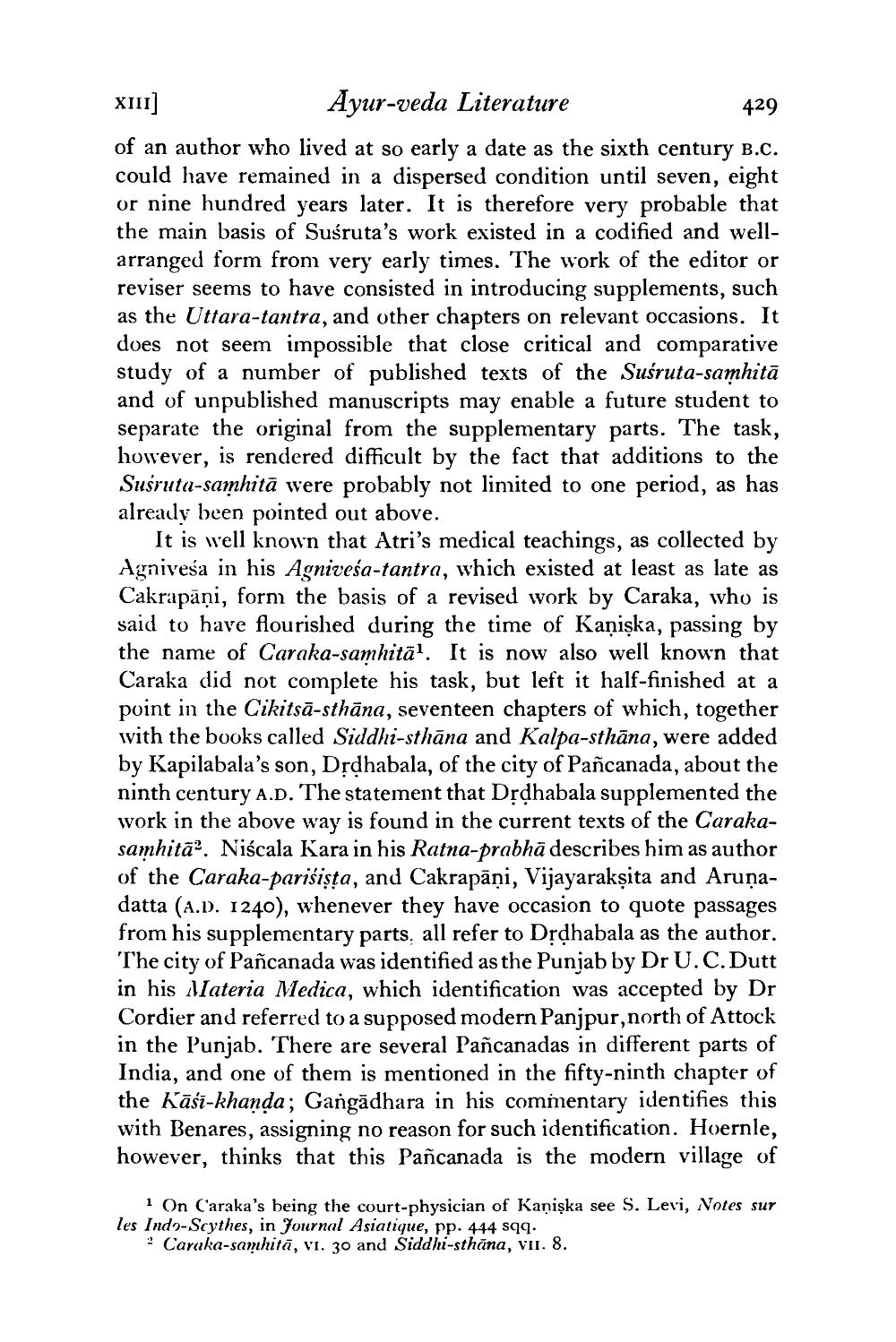________________
XIII] Ayur-veda Literature
429 of an author who lived at so early a date as the sixth century B.c. could have remained in a dispersed condition until seven, eight or nine hundred years later. It is therefore very probable that the main basis of Susruta's work existed in a codified and wellarranged form from very early times. The work of the editor or reviser seems to have consisted in introducing supplements, such as the Uttara-tantra, and other chapters on relevant occasions. It does not seem impossible that close critical and comparative study of a number of published texts of the Sušruta-samhitā and of unpublished manuscripts may enable a future student to separate the original from the supplementary parts. The task, however, is rendered difficult by the fact that additions to the Susruta-samhitā were probably not limited to one period, as has already been pointed out above.
It is well known that Atri's medical teachings, as collected by Agnivesa in his Agniveśa-tantra, which existed at least as late as Cakrapāņi, form the basis of a revised work by Caraka, who is said to have flourished during the time of Kaņiska, passing by the name of Caraka-samhitāl. It is now also well known that Caraka did not complete his task, but left it half-finished at a point in the Cikitsā-sthāna, seventeen chapters of which, together with the books called Siddhi-sthāna and Kalpa-sthāna, were added by Kapilabala's son, Drdhabala, of the city of Pañcanada, about the ninth century A.D. The statement that Drdhabala supplemented the work in the above way is found in the current texts of the Carakasamhitā”. Niscala Kara in his Ratna-prabhā describes him as author of the Caraka-pariţişta, and Cakrapāņi, Vijayarakṣita and Aruņadatta (A.D. 1240), whenever they have occasion to quote passages from his supplementary parts. all refer to Drdhabala as the author. The city of Pañcanada was identified as the Punjab by Dr U.C. Dutt in his Materia Medica, which identification was accepted by Dr Cordier and referred to a supposed modern Panjpur, north of Attock in the Punjab. There are several Pañcanadas in different parts of India, and one of them is mentioned in the fifty-ninth chapter of the Kāšī-khanda; Gangādhara in his commentary identifies this with Benares, assigning no reason for such identification. Hoernle, however, thinks that this Pañcanada is the modern village of
1 On (araka's being the court-physician of Kaniska see S. Levi, Notes sur les Indo-Scythes, in Journal Asiatique, pp. 444 sqq.
Caraka-samhitā, vi. 30 and Siddhi-sthāna, VII. 8.




